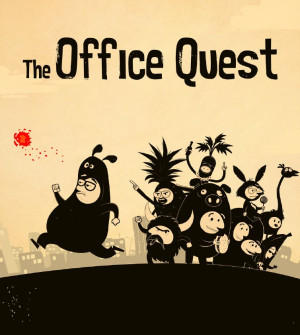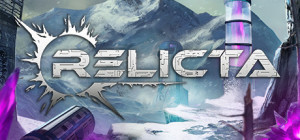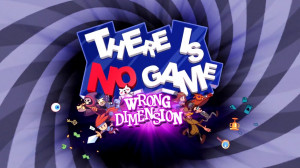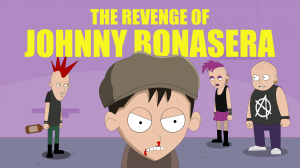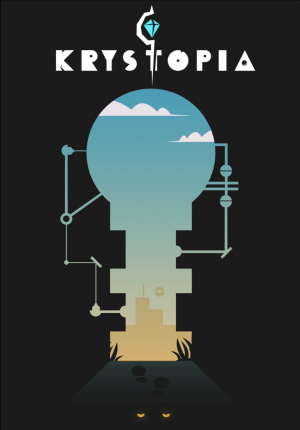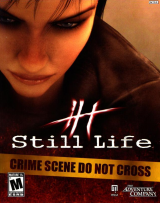Review for Amnesia: Rebirth
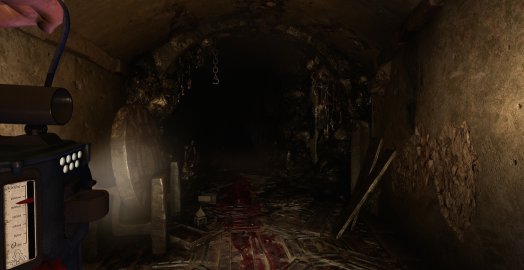
Note: Since time of writing, and optional "Adventure Mode" update allows for the game to be played without fear of threat from monsters or darkness, while adding additional puzzles. This review is based solely on the original release.
My review of Amnesia: The Dark Descent, now ten years old, proclaimed it to be the scariest game of all time. A lot more time has passed since then, and horror gaming, which was in a bit of a slump back then, is now one of the most crowded genres in all of gaming. Entire YouTube and Twitch empires are built on watching people play the latest horror games, and an entire cottage industry of indie developers has emerged to fill that demand.
Is it still the scariest game ever made? No, that would be Alien: Isolation, but the original Amnesia remains the benchmark by which almost all new horror games are measured, and each new release associated with Frictional Games is anticipated with equal parts excitement and dread by its audience. The 2013 spin-off A Machine for Pigs (developed by The Chinese Room rather than Frictional itself) moved away from the visceral danger of the first game and told a more intellectually stimulating (and revolting) tale. Frictional’s own SOMA similarly put the focus on narrative and puzzles over survival mechanics or stealth, but told a deeply chilling sci-fi horror story.
Now the indie Swedish company has returned to the Amnesia franchise with a direct sequel and a decade of expectation behind it. How does it fare? That depends on what you’re looking for in an Amnesia sequel. As a retread of the same formula, it comes up slightly lacking, but just as SOMA went in new directions to great success, Rebirth stands on its own as an excellent horror game.
Rebirth tells a new story that mostly stands alone, with a new setting and a new cast of characters, though it does connect back to its prequel in a few places. Taking place in the 1930s, the game casts the player as Tasi Trianon, an engineering drafter who, along with her husband Salim, has signed on to an expedition to a gold mine in Algeria in order to improve its efficiency. The flight to Algeria does not go as planned, and the plane crashes, stranding the expedition in the middle of the Sahara Desert.
Tasi wakes in the plane, only to find the rest of the crew missing. Determined to find her husband and figure out what’s happened, she sets out into the desert, alone and confused. It soon becomes clear that more time has passed since the crash than she initially remembers, and that a lot has taken place that she can’t recall. (What’s it called when someone loses their memory? I forget.) Retracing the steps of the expedition through the desert, Tasi discovers that the team was beset by strange shadow creatures and beings from another realm. Naturally, it’s not long before she encounters them herself.
The game unfolds through a mostly linear series of environments that blend the unfolding story and puzzles of a traditional adventure game with stealth segments and some light inventory management. In practice, Rebirth falls somewhere between The Dark Descent’s emphasis on survival elements and SOMA’s narrative-centric design. The survival aspects are present but heavily dialed back, included more to flavor the experience than to drive it. Here there is far more of a focus on the protagonist's personal story: Tasi has a rich inner world far beyond mere survival instinct, delivered by near-constant voice-over narration.
Much of this hinges on the reveal (early in the game) that Tasi is pregnant. Her fear is not just for her own safety, it’s for her husband and her unborn child. It might have been a cheap ploy for emotional manipulation if it weren’t embedded so deeply into the game, both narratively and mechanically. Instead it ends up being one of the most compelling and unique aspects of the game. There’s an entire button dedicated to checking in on your unborn baby, talking to it, and feeling its kicks and heartbeats. Doing so reduces your fear level in-game, but I also found myself checking in frequently to calm my own nerves.
Tasi’s memories, as they return to her, are presented in charcoal illustrations with voice-overs. Early on, these come so frequently that they threaten to completely derail the pace of exploration. Nearly every time you interact with something, a memory is triggered that introduces a new member of the expedition or otherwise sets up some important backstory. It’s helpful information, but it borders on annoying. Thankfully it relents after the first hour or two of the game’s eight- to ten-hour playtime, with these flashbacks coming much less often and driving the plot forward rather than just setting the scene. The art in these is excellent, and the voice acting is quite good across the board. There’s just too darn many up front.
Rebirth, like The Dark Descent, has you managing four essential resources: matches, used to light candles and torches around the environment; oil to keep your lantern fueled; sanity, which depletes around enemies and in darkness; and last but certainly not least, your health. Unlike in its predecessor, matches and oil seem to be doled out much more generously. I was conscious of my supplies but not stingy, and I never ran short of either. Similarly, in The Dark Descent, losing your sanity led to death and having to return to your last checkpoint – here Tasi blacks out, succumbing to a mysterious illness she’s contracted and waking up after the sequence in question, though the game hints that repeated failure might take a toll on your baby.
All of this takes some of the bite out of the experience. It’s simply not as scary as the original, with less danger and lower stakes for failure. If your gauge of the success of a horror game is raw terror output, you may be disappointed. There are fewer stealth and chase sequences, and those that are present, while very good, are more scripted than before. The Dark Descent kept you on your toes, suddenly foisting multiple enemies upon you at a time and forcing you to crisscross back and forth across an area. Here, a typical scenario announces itself with a scripted sequence, then tasks you with getting from one end of a linear series of rooms to the other with a slow, lumbering monster in your way. This means crouching behind cover, moving slowly, and sticking to the darkness. Of course, prolonged stretches in the dark do a number on your sanity, leading to a tug-of-war between your immediate safety and keeping your sanity from shattering.
But there’s more going on here than just being stalked by monsters: Rebirth plays on primal parental fears of loss and abandonment while also telling a compelling story that dives into cosmic horror and science fiction territory. Suffice it to say that you don’t spend the entire game plodding through the desert.
It also has some of the best puzzles Frictional has ever designed. Rebirth continues the tradition of a highly interactive gameworld rife with physically simulated objects. To open a door, you must click and drag the handle. To pry the wooden planks from a boarded-up doorway, you must click and pull them off one by one. It occasionally makes for clumsy interactions with things, but much more often adds a satisfying weight to interactions. Even if the puzzles aren’t often particularly difficult, solving them feels great because it seems like you’ve overcome a real-world obstacle rather than simply clicked on things in the right order.
There are several points where Rebirth evokes a far darker take on Myst’s alien worlds and technology. Tasi encounters rifts that connect our world with another realm, a wasteland shrouded in shadow. Many of the puzzles revolve around learning to manipulate and understand machinery from this other world, whether it’s operating portable power sources that rely on line of sight to the objects they power, or tinkering with a strange map system to lock in a destination. I’ve always been a fan of Frictional’s puzzles – they require thought and patience without ever becoming frustrating or completely derailing the momentum of the story.
All of this is presented with the studio’s usual excellent production values. This is easily their best-looking game, with dramatic real-time lighting throughout and an impressive amount of fine detail. It’s always pleasing to slowly work your way through a pitch black environment and methodically blanket it in warm light, and the more exotic locales later on feel deeply unwelcoming and oppressive. They do the series proud in terms of being so unpleasant that they don’t need any overt danger to compel you to want to get the hell out – I mean, unless you’re the kind of person who enjoys navigating through ancient labyrinths choked with the dust of millennia of death and destruction, or wading through literal vats of human viscera while wraith-like soul-sucking monitors hover overhead.
The few encounters with human characters look much better than previous Frictional games as well, and the monsters are smartly kept mostly obscured, never letting you get a full glimpse of their nightmarish forms. Animations are excellent, from the inner workings of the aforementioned alien technology to the myriad first-person animations that keep you firmly immersed in Tasi’s experience.
Even more so, the voice acting is excellent, especially Tasi herself – a good thing, since you’ll be hearing from her a lot. Actress Alix Wilton Regan captures the range of Tasi’s extreme emotions, from abject terror to maternal gentleness. Her performance carries the game and infuses it with pathos. The supporting cast is quite good but this is Tasi’s show. The audio landscape around her is expectedly topnotch as well. The Amnesia series has always had incredible sound design, and that continues here. This is the kind of game where accidentally kicking a stone lying on the ground can make you jump out of your seat. Even the darkness is given an aural cue: as fear sets in from the shadows, the hideous sound of chittering insects can be heard in your ears, disturbingly close by. It’s an awful sound and it does its job very well. And this isn’t even getting into the otherworldly noises made by the shadow creatures you encounter. The music is also good, if not extremely memorable, managing to underscore the game’s broader emotional palette nicely with equal parts frantic dissonance, awe-inspiring mystery, and melancholy.
If it’s not clear, this is still a very scary game, though with the caveats listed earlier, it does feel like its teeth have been filed down a tad. And to be fair, the fault doesn’t entirely lie with the developer. We’re coming up on a decade of games deeply influenced by The Dark Descent. In 2010, the idea of being totally defenseless in a horror game, of being forced to flee and hide and pray for survival, was fresh and innovative. It’s now the baseline for most horror games that aren’t explicitly aping the Resident Evil formula. Of course it’s not going to hit quite as hard after years of imitators. Perhaps that’s why Frictional seems to have intentionally backed away from some of those elements and put the focus on the story and world, both of which are far stronger than Rebirth’s predecessor, right up to the multiple endings, which I found far more satisfying than the first game’s rushed conclusion. Like the original game, this one follows an essentially set path until its last moments, where your actions can drastically change the outcome. This makes jumping back to your previous save and seeing the various permutations pretty quick and easy (though doing so shatters some of the illusion that your earlier actions mattered all that much).
Amnesia: Rebirth is not as scary as The Dark Descent, but it’s perfectly okay for a game to be “not quite as scary as one of the best horror games of all time.” If you can scrape away that layer of mild disappointment, you’ll be treated to a fine horror adventure – one that plays on different fears, one that expands on the hazy lore behind the franchise without ruining the mystery, and one that still had me clenching my nethers for good long stretches of its runtime. Frictional remains the industry's foremost masters of horror and you’d be doing yourself a disservice to pass up this journey into hell.











